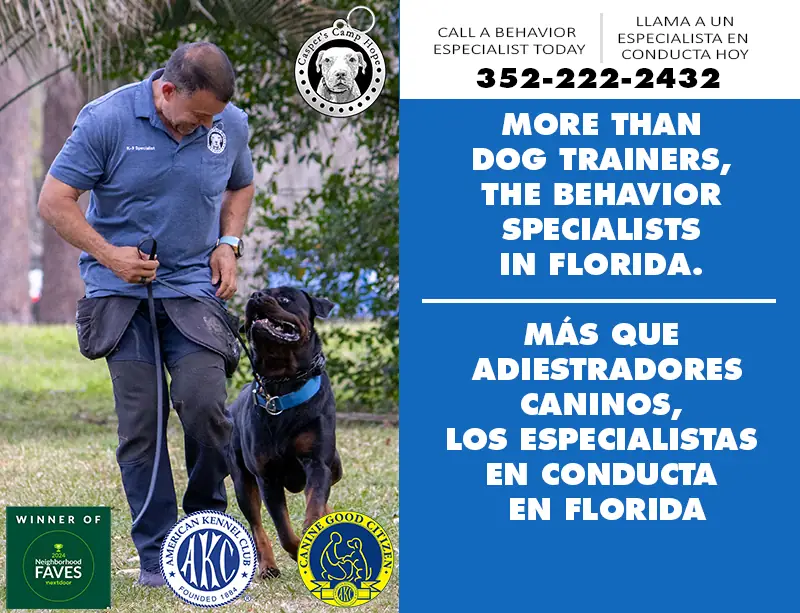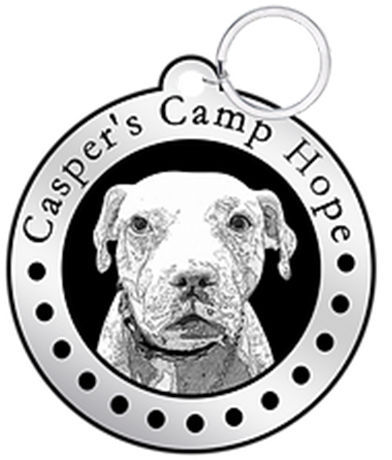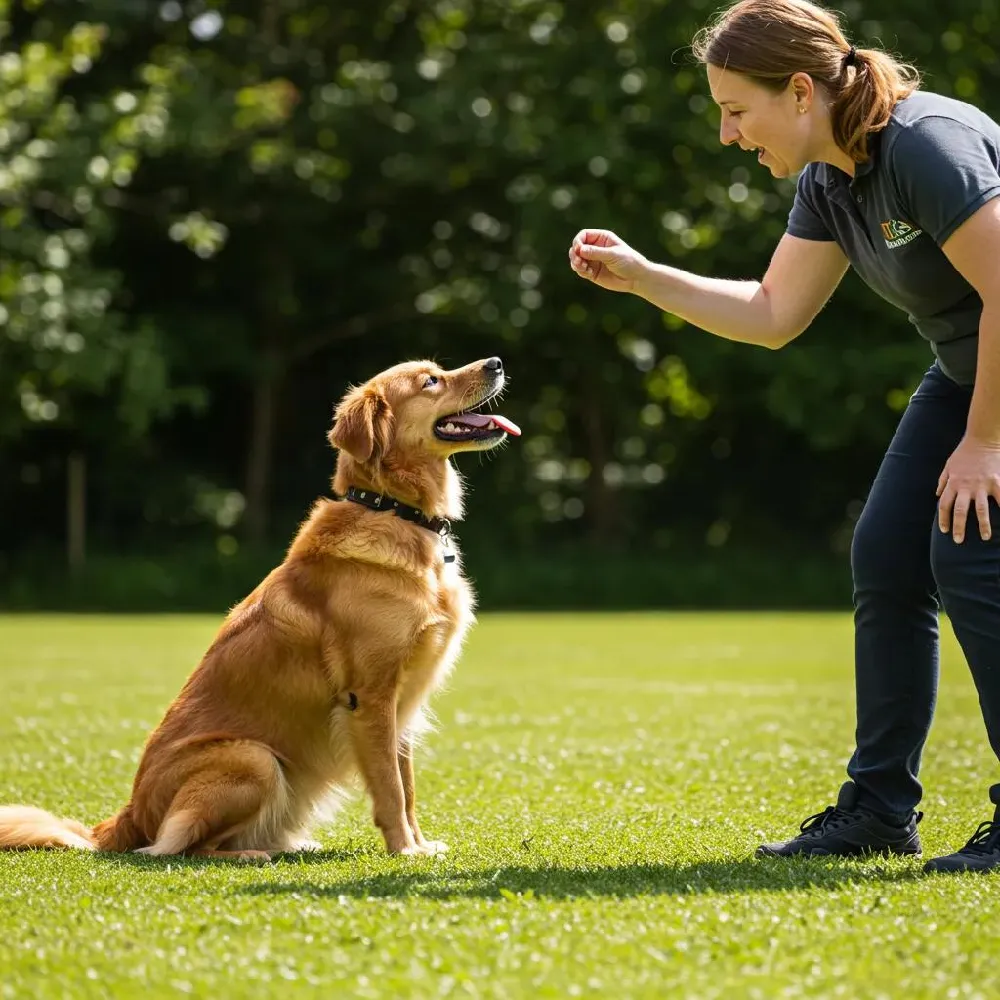
Every lasting transformation in canine conduct begins with science-backed methods that respect a dog’s natural motivations and learning patterns. Owners often struggle with inconsistent results because they overlook core principles like reinforcement schedules and conditioning frameworks. This guide delivers proven dog behavior training techniques that blend positive reinforcement, classical conditioning, operant conditioning, and consistency to generate durable outcomes. You will learn foundational principles of effective training, step-by-step methods for obedience and problem-solving, strategies for maintaining progress, indicators for seeking expert assistance, how behavior work enhances boarding experiences at Caspers Camp Hope, and the latest trends shaping canine education as of October 2025. With these insights, you can elevate your dog’s compliance, well-being, and adaptability both at home and during boarding stays.
What Are the Foundational Principles of Effective Dog Behavior Training?
Effective dog behavior training hinges on the interplay between canine motivation, learning mechanisms, and consistent application of reinforcement. Foundational principles define how dogs perceive stimuli, learn desired behaviors, and generalize skills across environments. By understanding these elements, trainers craft clear cues, predictable outcomes, and lasting behavior change.
How Does Understanding Canine Behavior Improve Training Outcomes?
Understanding canine behavior means recognizing body language, social drives, and environmental influences that guide a dog’s actions. Dogs communicate through posture, facial expression, and vocal cues; for example, a tucked tail signals submission, while direct eye contact may denote challenge. Awareness of these signals allows trainers to time reinforcement precisely, minimizing confusion and stress. Observing play behavior and social hierarchies further refines approach strategies and prevents inadvertent reinforcement of undesirable actions. This insight lays the groundwork for applying specific training methods like positive reinforcement with optimal timing.
What Is Positive Reinforcement and Why Is It Effective?
Positive reinforcement is a training method that rewards desired behaviors with treats, praise, or play, increasing the likelihood those behaviors recur. This approach leverages the dog’s motivational systems—food, social interaction, and environmental exploration—to shape compliance. Rewards trigger dopamine release, which strengthens neural pathways associated with the behavior. For example, rewarding a “sit” command with a small treat immediately after the dog sits builds a clear cause-and-effect relationship. Positive reinforcement cultivates enthusiasm, reduces stress, and fosters strong bonds between dog and handler, supporting enduring behavior change.
How Do Classical and Operant Conditioning Shape Dog Learning?
Classical conditioning pairs a neutral cue with an innate response, while operant conditioning links voluntary actions to consequences. In classical conditioning, a clicker (neutral stimulus) becomes a predictor of reward (unconditioned stimulus) after repeated pairings, producing anticipatory behavior (conditioned response). Operant conditioning categorizes consequences as positive reinforcement, negative reinforcement, positive punishment, or negative punishment to either increase or decrease specific behaviors.
| Conditioning Type | Principle | Training Outcome |
|---|---|---|
| Classical Conditioning | Pairing neutral cue with reflexive reward | Dogs anticipate treats at cue, increasing focus |
| Operant Conditioning | Applying consequences after voluntary acts | Desired behaviors increase, unwanted decrease |
This structured framework empowers trainers to select appropriate methods for each learning objective and accelerate skill acquisition.
Why Is Consistency Key in Dog Behavior Modification?
Consistency ensures predictable outcomes that reinforce learning. When cues, rewards, and corrections vary, dogs receive mixed signals and progress stalls. Consistent reinforcement schedules—such as rewarding every correct response initially and gradually shifting to intermittent reinforcement—solidify behavior. Uniform cue phrasing and timing across handlers prevent confusion and support faster generalization. Consistency also applies to rules and routines at home and during boarding to preserve learned behaviors in different contexts.
How Can You Master Essential Dog Training Techniques for Lasting Results?
Mastering essential training techniques involves systematic progression from basic cues to advanced skills, using structured steps that build confidence and reliability. Clear shaping methods, marker signals, and graduated challenges enable dogs to understand expectations and succeed consistently.
What Are the Step-by-Step Methods for Puppy Obedience Training?
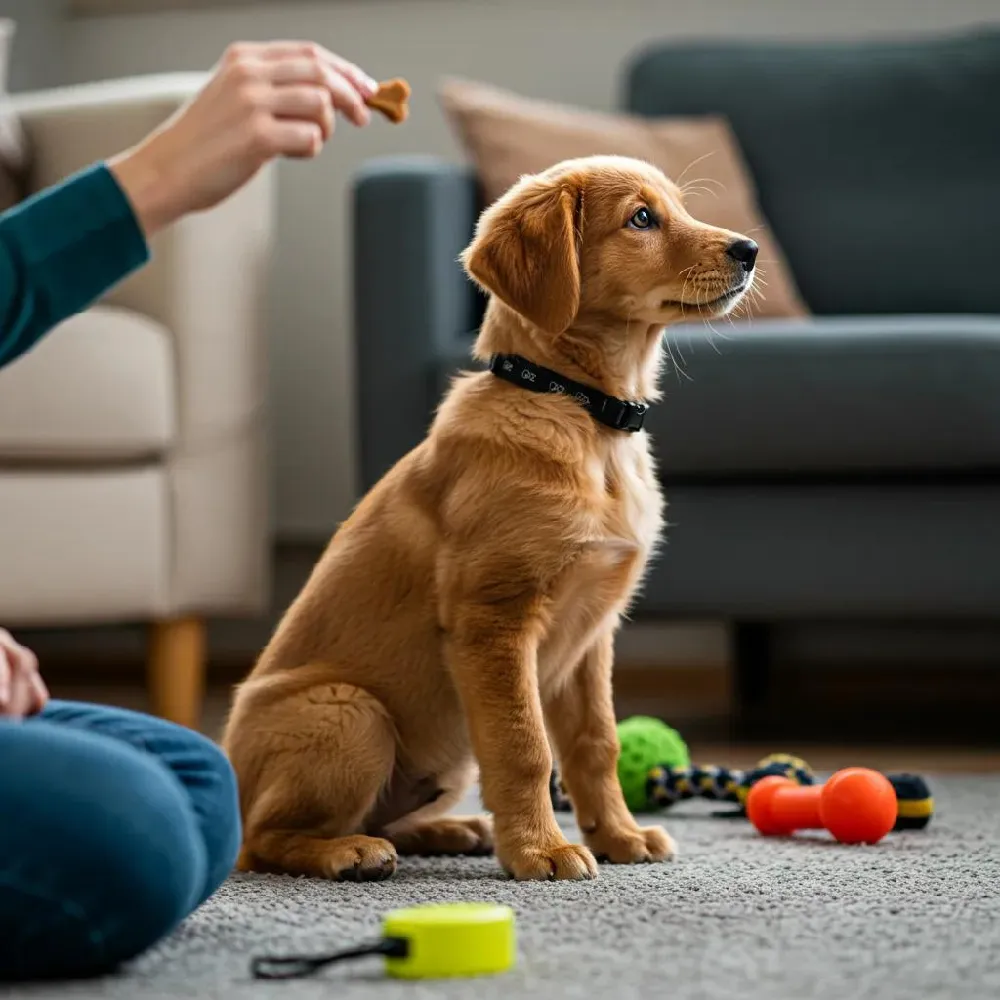
Puppy obedience training begins with establishing clear communication and simple tasks.
- Define clear verbal cues like “sit” or “come.”
- Use luring techniques by holding a treat above the puppy’s nose to guide posture.
- Mark the desired behavior with a clicker or verbal marker (“yes”) immediately when the puppy complies.
- Reward with praise and a small treat before the puppy moves away.
- Repeat in short, frequent sessions to leverage a puppy’s brief attention span.
These steps harness operant conditioning and positive reinforcement to instill core commands while supporting early socialization and impulse control.
How Does Clicker Training Enhance Positive Reinforcement?
Clicker training uses a precise auditory marker to signal the exact moment a dog performs a target behavior. This mechanism accelerates learning by eliminating timing ambiguity.
- Click → Offer treat within one second
- Clicker sound becomes conditioned stimulus predicting reward
- Dogs associate click with positive outcome and repeat behavior
Clicker training refines communication, supports shaping of complex behaviors, and fosters a confident learning environment for both puppies and adult dogs.
What Are Effective Leash Training and Reactivity Solutions?
Leash training and reactivity management involve teaching dogs to remain calm under arousal and resist pulling or lunging. Foundational steps include:
- Use a loose-leaf reinforcement approach: mark and reward when the leash is slack
- Employ threshold management to keep the dog below reactivity levels
- Gradually decrease distance to triggers while reinforcing calm behavior
- Introduce alternative behaviors like “look at me” to shift attention
These methods reshape reactive responses through desensitization and counter-conditioning, supporting safer walks and reducing stress for dogs and handlers.
How Can Advanced Obedience and Trick Training Improve Behavior?
Advanced obedience and trick training deepen engagement and mental stimulation, which reduces boredom and undesirable behaviors. Incorporating behaviors like “spin,” “back up,” or “roll over” follows a shaping process:
| Trick | Training Step | Benefit |
|---|---|---|
| Spin | Lure with treat in circular motion | Improves body awareness |
| Back Up | Teach stepping backward on cue | Enhances spatial control |
| Roll Over | Chain “down” into side roll sequence | Develops complex sequence learning |
Progressing through trick training reinforces impulse control, strengthens the dog–trainer bond, and maintains motivation for lifelong learning.
What Are the Most Common Canine Behavior Problems and How Can They Be Solved?
Addressing prevalent behavior problems like aggression, separation anxiety, and nuisance behaviors requires tailored behavior modification plans and consistent management. Each issue stems from distinct triggers and can benefit from desensitization, counter-conditioning, and environmental adjustments.
How Do You Stop Dog Aggression Using Behavior Modification Techniques?
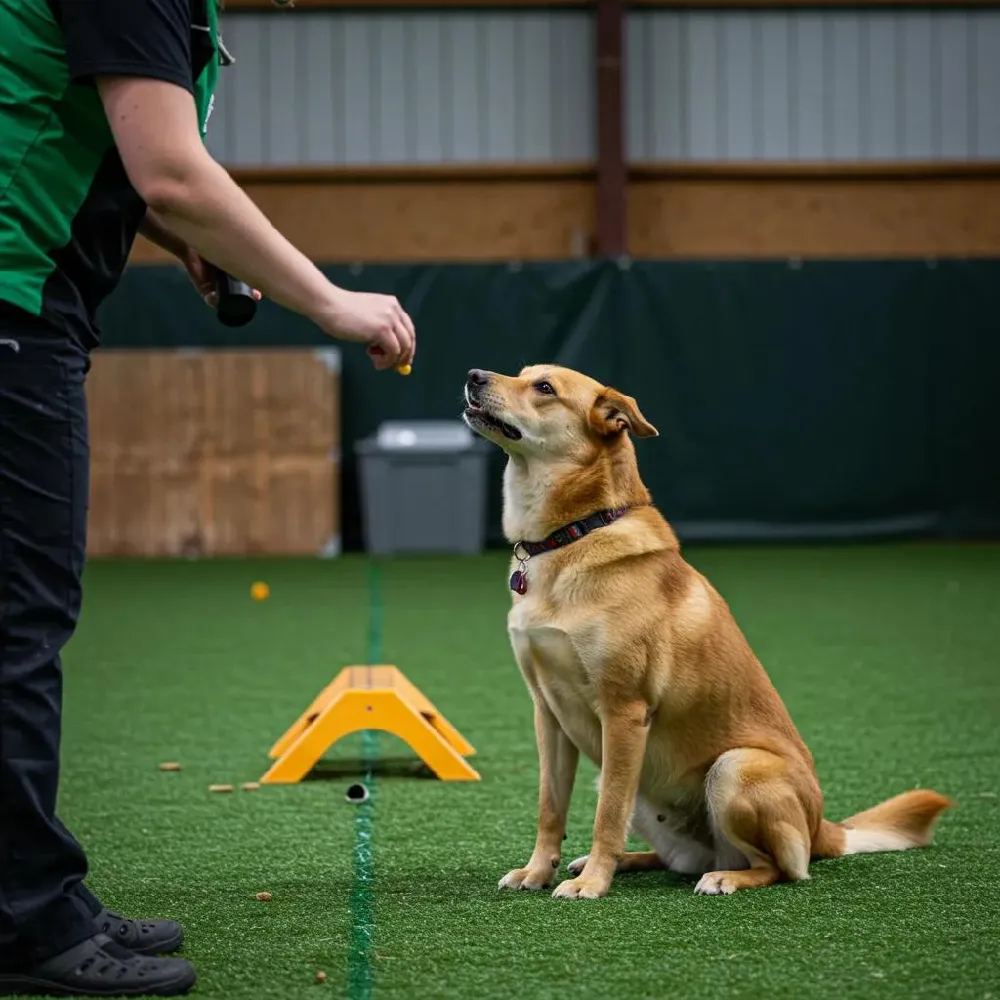
Stopping dog aggression involves systematic desensitization and counter-conditioning to change emotional responses to triggers.
- Identify aggression triggers (e.g., strangers, other dogs)
- Expose the dog to low-intensity triggers paired with high-value rewards
- Gradually increase trigger intensity while reinforcing calm behavior
- Teach alternative behaviors like “sit” or “back off” to interrupt escalation
This structured approach rewrites the dog’s emotional association with triggers and fosters controlled social engagement.
What Are Proven Strategies to Manage Separation Anxiety in Dogs?
Separation anxiety solutions combine gradual desensitization to departures with enrichment and independence training.
- Practice short departures with immediate return before anxiety escalates.
- Provide puzzle toys or treat-dispensing devices at departure.
- Teach “stay” and “settle” in a crate or mat with positive reinforcement.
- Pair departure cues (e.g., grabbing keys) with neutral or pleasant routines to minimize arousal.
Over time, the dog learns that owner absence predicts enrichment rather than distress.
How Can You Stop Excessive Barking and Other Nuisance Behaviors?
Excessive barking often reflects boredom, anxiety, or territorial instincts. Effective solutions include:
- Identify the barking motivation (alert, attention-seeking, frustration)
- Teach “quiet” cue by marking moments of silence and rewarding promptly
- Increase mental and physical stimulation through play and enrichment
- Implement management tools like head halters for impulse control
Consistency and timely reinforcement reshape vocal behavior into desired quiet responses.
What Are Effective Solutions for Preventing Destructive Chewing?
Destructive chewing results from teething, boredom, or anxiety. Prevention tactics involve:
- Provide durable chew toys rotated regularly to maintain novelty
- Supervise and redirect inappropriate chewing to approved items
- Use taste deterrents on off-limits objects
- Incorporate daily exercise and mental challenges to reduce excess energy
These measures protect property while guiding dogs toward acceptable chewing alternatives.
How Do You Maintain Lasting Results in Dog Behavior Training?
Maintaining lasting results depends on generalizing behaviors across contexts, proofing under distractions, and reinforcing successes through ongoing practice. Durable change emerges when dogs perform reliably in varied situations.
What Is Behavior Generalization and Why Is It Important?
Behavior generalization teaches dogs to apply learned commands across environments and under different stimuli. Training a “sit” command exclusively at home may not translate to a busy park. By varying location, surface, handler, and distractions during training sessions, dogs learn to respond reliably despite changing conditions. Generalization cements skills and prevents regression when contexts shift.
How Can You Use Proofing to Reinforce Training Success?
Proofing involves testing behaviors under increasing complexity and adding distractions to strengthen reliability. For example, practice “stay” with side distractions like rolling balls or passing bicycles. Gradually escalate difficulty while maintaining high reward rates for correct responses.
Proofed behaviors remain consistent in real-world scenarios, ensuring long-term obedience and safety.
What Are Ongoing Practice Tips to Sustain Good Behavior?
Effective maintenance routines include short daily refresher sessions, rotating activities to sustain interest, and integrating training into everyday interactions.
- Conduct two-minute reinforcement drills after walks
- Use mealtime as a training opportunity for “wait” or “down” cues
- Offer enrichment games that reinforce learned behaviors
Consistent practice supports lifelong compliance and refreshes learned associations.
When Should You Seek Professional Help for Dog Behavior Issues?
Professional intervention becomes critical when behavioral problems exceed owner management skills or pose safety risks. Certified experts provide specialized assessments, behavior modification plans, and structured environments for rehabilitation.
How Do You Identify Severe Behavioral Problems Requiring Experts?
Severe behaviors include aggression toward humans, unpredictable attacks, high-level anxiety that triggers self-harm or escape behaviors. When a dog’s reactions endanger people or property and owner-led strategies fail after consistent effort, professional assessment is warranted. Early recognition prevents escalation and improves chances of successful modification.
What Qualifications Should You Look for in a Certified Dog Trainer?
A qualified trainer should hold credentials from recognized organizations such as the Certification Council for Professional Dog Trainers (CCPDT) or accreditation by the Association of Professional Dog Trainers (APDT). Relevant experience includes documented behavior modification case histories, veterinary behavior consultations, and force-free, science-based methodologies. Verifiable references and ongoing education in canine behavior science further indicate credibility.
How Can Professional Behavior Modification Programs Support Your Dog?
Structured behavior modification programs offer specialized facilities, one-on-one sessions, and customized training plans. Professionals use diagnostic assessments to create step-by-step protocols incorporating desensitization, counter-conditioning, and controlled socialization. This targeted approach accelerates progress and addresses deep-rooted issues that require expert oversight.
How Does Behavior Training Enhance Your Dog’s Boarding Experience?
Integrating behavior training into boarding routines at Caspers Camp Hope improves adaptation, reduces stress, and fosters positive interactions with staff and other dogs. Trained dogs settle faster, follow facility rules, and enjoy enrichment activities more fully.
Why Does Training Improve Boarding Success and Dog Well-Being?
Trained dogs respond to cues like “place” or “down” in group settings, reducing conflict and promoting calm engagement. Familiarity with basic commands helps dogs navigate transitions between indoor rest areas and outdoor play yards. This consistency lowers cortisol levels and supports positive coping during stays.
What Training Preparations Help Dogs Adjust to Boarding Facilities?
Preparation steps include practicing crate training and “settle” commands to mirror boarding protocols. Expose dogs to varied surfaces and kennel environments at home so they acclimate quickly. Pack familiar items like toys and bedding that carry home scents to ease transitions.
| Preparation | Attribute | Benefit |
|---|---|---|
| Crate Training | Voluntary enclosure use | Reduces separation stress |
| Familiar Bedding | Home scent retention | Provides comfort in new environments |
| “Settle” Cue Practice | Calm behavior on mat | Supports restful periods in boarding facilities |
These steps create seamless continuity between home training and boarding routines.
How Can Boarding Staff Support Ongoing Behavior Training?
Boarding staff can reinforce learned commands through consistent cue usage, reward systems, and scheduled practice sessions. Incorporating daily training drills into playtime and meal times sustains progress. Staff collaboration with owners on progress reports and tailored plans ensures training consistency across environments.
What Are the Latest Trends and Research in Dog Behavior Training?
Recent developments in dog behavior training emphasize force-free methods, digital learning tools, and evidence-based protocols drawn from veterinary behavior research. These advances refine training efficacy and accessibility.
How Is Positive Reinforcement Shaping Modern Dog Training Practices?
Positive reinforcement remains the dominant force-free method, with trainers increasingly employing variable reward schedules to maintain high motivation and manage satiation. Research in October 2025 highlights that intermittent reinforcement schedules lead to stronger resistance to extinction, ensuring dogs continue desired behaviors even when rewards are spaced.
What Does Recent Research Say About Managing Aggression and Anxiety?
Veterinary behavior journals report that combining desensitization with low-dose anxiolytic support enhances treatment outcomes for severe aggression and separation anxiety. Controlled studies indicate up to 70% reduction in reactivity incidents when behavior protocols integrate environmental enrichment, structured socialization, and, when appropriate, veterinarian-supervised medication.
How Are Virtual Training and Online Resources Changing Dog Behavior Solutions?
Virtual training platforms now offer live, interactive sessions with certified trainers, leveraging video analysis and real-time feedback. Online courses incorporate guided video demonstrations, progress-tracking apps, and community forums that enable owners to access expert guidance without geographic constraints. This digital evolution democratizes access to high-quality behavior modification programs.
Training dogs with positive reinforcement and structured behavior modification not only strengthens owner–dog bonds but also supports successful boarding experiences and long-term well-being. By mastering foundational principles, essential techniques, and maintenance strategies, owners can address common challenges and achieve durable results. When issues exceed home-based methods, certified professionals provide targeted support to ensure safety and progress. Continuous learning, evidence-based protocols, and modern digital tools will shape dog behavior training well beyond 2025.
